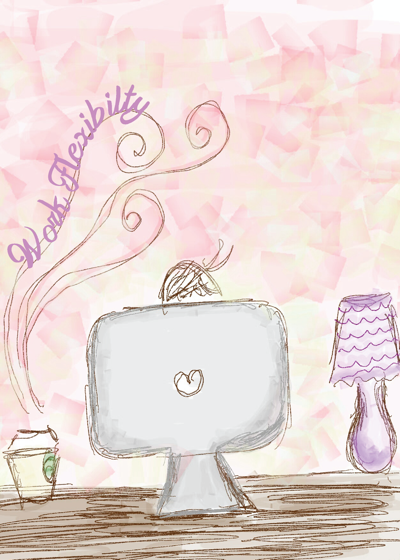How does workplace flexibility impact the productivity at work? and what does it really mean for both the company and the employees?

Productivity is something that has long interested me. Let’s face it; we all have different methods of working and different times when we’re at our most efficient. This fact seems so apparent to everyone that it surprises me how the majority of work environments and corporate cultures are so rigid.
A significant proportion of work environments still require their employees to be present from a certain time to a certain time each day and expect all of the work to be done at an office desk surrounded by many other people all doing the same thing. That being said, however, rules are needed in the first place to ensure those that have a tendency to slack off don’t.
Almost everyone, however, understands the fluctuations in human productivity and the difference between each person’s optimal working conditions. It surprises me that although this is common knowledge, most workplaces are far from adapting more efficient practices.
In my belief, at the end of the day if the required tasks have been completed, the circumstances under which they were completed shouldn’t really matter. Workplaces should adapt to allow work to be done from home, from other locations, and at different hours of the day.
We must take full advantage of technology. Most corporate employees will tell you of the amount of time they spend simply writing emails or coordinating tasks or projects via email. This is something that can be done anywhere; so can most marketing, accounting, and strategy planning tasks.
I, for one, know that I am much more productive in a café environment than I am at an office. Ironically, for me, the distractions in an office are far too plenty compared to a café. Something about being out in public and only having a small table to call my own really pushes me to work. And when I need a break, I just look around and people-watch for a few minutes. This is one way that I got through my Master’s dissertation, as well.
And from personal experience, and observing and speaking to many of those around me; the productivity hours lie far on either side of the 9AM-5PM spectrum. There are people who can only work best in the twilight hours, when everyone’s gone to bed. For me, I work best at the time between 6-9AM when everyone is asleep or just waking up and offices haven’t started yet. Once the official work day starts, I am inundated with calls, texts, emails, and other day-to-day management issues to deal with that finishing one task takes three times the amount of time it would have otherwise taken me during my cherished morning hours. The ability to be flexible in your work, however, depends on the type of work you are doing. Professions that require active engagement with people such as those in the medical professions don’t have that luxury of choosing their working hours.
A case in point is right now, actually. I’ve been sitting down and trying to get this article done for several days. The ideas have been floating in my head and I’ve jotted them down but every time I sit down to actually write one thing or the other distracts me; an email that has to be sent right this hour, or a follow-up on an order, or anything else. Now it’s 7AM and I am tapping away at my keyboard without any disturbances.
That being said, work environments do have their benefits and I’m not advocating a complete downsizing of offices because everyone will be working from their own chosen locations. Of course, the obvious fact is that they’re good for meetings, they’re good for improving communication between staff members, for transparency, and for collaboration. But the option to work at one’s own schedule for certain days of the week should also be incorporated into our 21st century work culture.
A demographic that will certainly appreciate that is new mothers. Conditions need to be made more suitable for new mothers to ease their transition back into working life. That would include a longer maternity leave, but also the option of working from home, and working part-time. That way, offices in general and the economy as a whole do not suddenly lose out on a huge talent base.
There has been progress in a lot of forward-thinking corporate cultures. Google for one is very impressive in its human-centric approach to work. It understands the fundamental fact that happier staff, and a better work-life balance means more productivity and more innovation for the company.
With a better understanding of the nature of human productivity and its direct effects on a company’s efficiency and innovation, I hope that more companies take a flexible approach to working arrangements thus making it possible for more people to contribute at their maximum potential.



